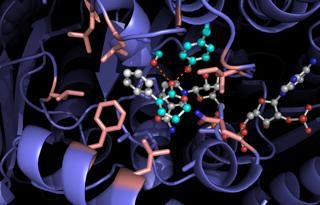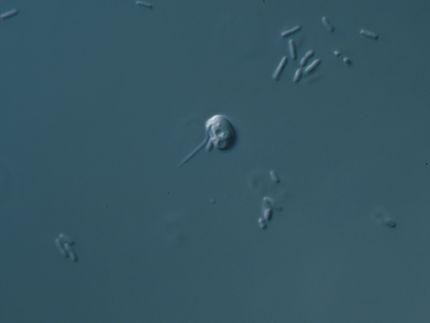No evidence for 30-nm chromatin fibres in the mouse genome
Scientists in Canada and the United States have used three-dimensional imaging techniques to settle a long-standing debate about how DNA and structural proteins are packaged into chromatin fibres. The researchers, whose findings are published in EMBO reports, reveal that the mouse genome consists of 10-nm chromatin fibres but did not find evidence for the wider 30-nm fibres that were previously thought to be important components of the DNA architecture.
“DNA is an exceptionally long molecule that can reach several metres in length. This means it needs to be packaged into a highly compact state to fit within the limited space of the cell nucleus,” said David Bazett-Jones, Senior Scientist at the Hospital for Sick Children, Toronto, and Professor at the University of Toronto, Canada. “For the past few decades, scientists have favoured structural models for chromatin organization where DNA is first wrapped around proteins in nucleosomes. In one possible model, the strand of repeating nucleosomes is wrapped further into a higher-order thick 30-nm fibre. In a second model, the 30-nm fibre is not required to compact the DNA. Differences between these models have implications for the way the cell regulates the transcription of genes.”
Chromatin is the complex of DNA and proteins that is the fundamental constituent of chromosomes in the nucleus of the cell. The researchers used a combination of state-of-the-art imaging techniques, in this case energy spectroscopic imaging and electron tomography, to generate high-resolution three-dimensional images of chromatin in mouse cells. This approach allows for visual analysis of chromatin fibres without the need to add chemical agents to improve the contrast of images.
“Our results revealed that the 30-nm chromatin fibre model is not consistent with the structure we found in our three-dimensional spectroscopic images,” said Bazett-Jones. “It was previously thought that the transition between thinner and thicker fibres represented a change from an active to repressed state of chromatin. However, our inability to detect 30-nm fibres in the mouse genome leads us to conclude that the transcriptional machinery has widespread access to the DNA packaged into chromatin fibres.”
The results are consistent with recent studies of the human genome which suggest that approximately 80% of the genome contains elements that are linked to biological function. Access to enhancers, promoters and other regulatory sequences on such a wide region of the genome means that all of these sites must be accessible. The 10-nm model of chromatin fibres provides sufficient access to DNA to allow potential target sites to be reached. The 30-nm model would not accommodate such widespread access.
The researchers offer several reasons for the observation of wider fibres in earlier studies. In some cases, the conditions outside of the cell, including those used in earlier studies where chromatin was extracted from the cell, may have given rise to structural artifacts. For some of the earlier spectroscopic studies, it may even be a question of poor resolution of existing 10-nm fibres.
Original publication
Most read news
Original publication
Eden Fussner, Mike Strauss, Ugljesa Djuric, Ren Li, Kashif Ahmed, Michael Hart, James Ellis, and David P. Bazett-Jones ; " Open and closed domains in the mouse genome are configured as 10-nm chromatin fibres."; EMBO Reports.
Organizations
Other news from the department science

Get the life science industry in your inbox
By submitting this form you agree that LUMITOS AG will send you the newsletter(s) selected above by email. Your data will not be passed on to third parties. Your data will be stored and processed in accordance with our data protection regulations. LUMITOS may contact you by email for the purpose of advertising or market and opinion surveys. You can revoke your consent at any time without giving reasons to LUMITOS AG, Ernst-Augustin-Str. 2, 12489 Berlin, Germany or by e-mail at revoke@lumitos.com with effect for the future. In addition, each email contains a link to unsubscribe from the corresponding newsletter.
Most read news
More news from our other portals
Last viewed contents
Generex Awarded New Pain Relief Patents - Company Expands Patent Portfolio in Mexico and New Zealand

Canine Diag’noses’ - Dogs can detect SARS-CoV-2 infected humans on all tested body fluids with high accuracy

Light powers new chemistry for old enzymes

ACHEMA 2018: Preparations moving into high gear






















































